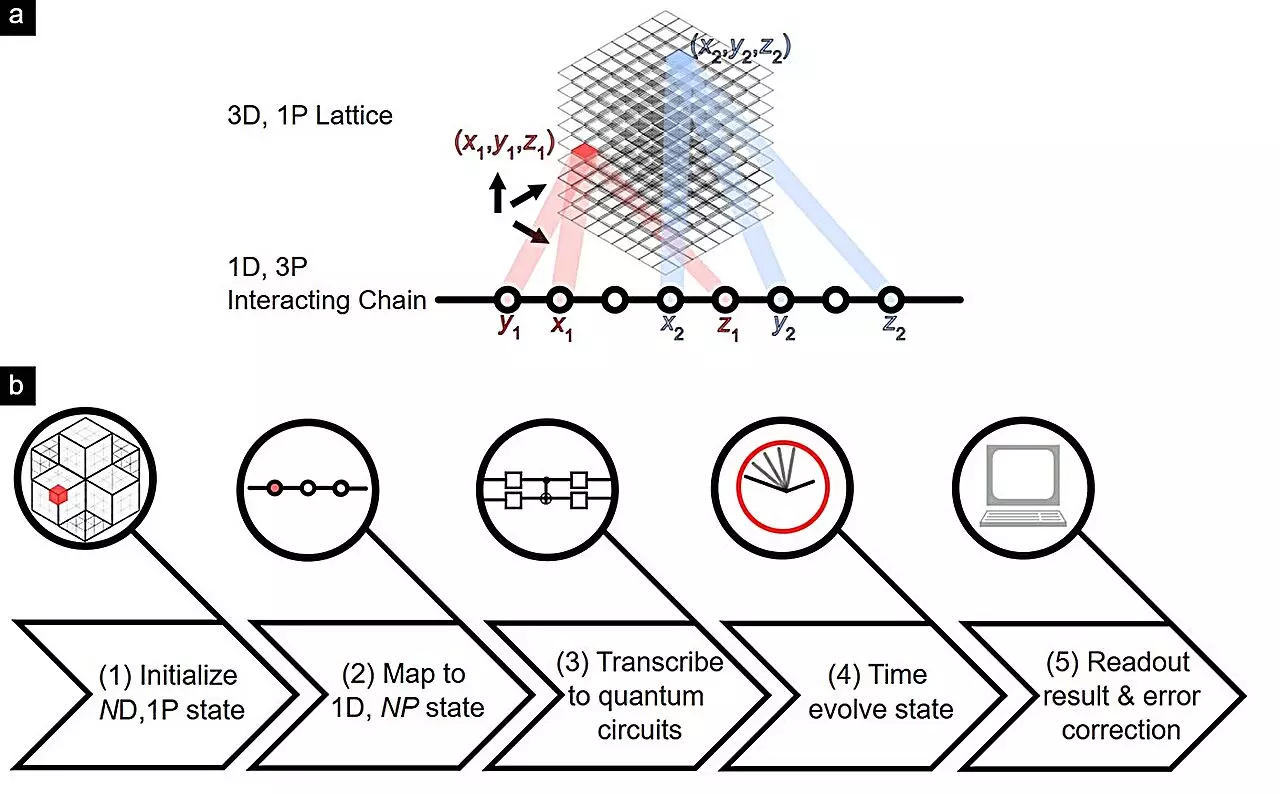Researchers at the National University of Singapore (NUS) have made a groundbreaking discovery in the field of quantum computing. By simulating higher-order topological (HOT) lattices with digital quantum computers, they have unlocked a new realm of possibilities for understanding advanced quantum materials with robust quantum states. These complex lattice structures hold the key to various technological applications and have attracted significant attention among physicists and engineers.
Led by NUS Assistant Professor Lee Ching Hua, the research team has developed a scalable approach to encoding large, high-dimensional HOT lattices into simple spin chains using many-body quantum interactions. This innovative method leverages the power of quantum computer qubits to store exponential amounts of information while minimizing resource requirements in a noise-resistant manner. By bridging the gap between theory and experimentation, the team has opened up a new frontier in the simulation of advanced quantum materials using digital quantum computers.
The findings of this research, published in the prestigious journal Nature Communications, offer a glimpse into the future of quantum computing. Prof Lee emphasized the significance of finding new applications for quantum computers that provide unique advantages beyond highly-specific tailored problems. By exploring the intricate signatures of topological materials on quantum computers, the team has achieved a level of precision that was previously unattainable, even for hypothetical materials existing in four dimensions.
Despite the limitations of current noisy intermediate-scale quantum (NISQ) devices, the research team was able to measure topological state dynamics and protected mid-gap spectra of higher-order topological lattices with unprecedented accuracy. This feat was made possible through the use of advanced in-house developed error mitigation techniques. By pushing the boundaries of current quantum technology, the team has demonstrated the potential of quantum computing to explore new frontiers in material engineering.
The ability to simulate high-dimensional HOT lattices opens up a myriad of research directions in quantum materials and topological states. This paves the way for achieving true quantum advantage in the future, where quantum computers can revolutionize the field of material engineering. With the continued advancement of quantum technology, we can expect to see more groundbreaking discoveries and innovative applications in the realm of quantum computing.


Leave a Reply